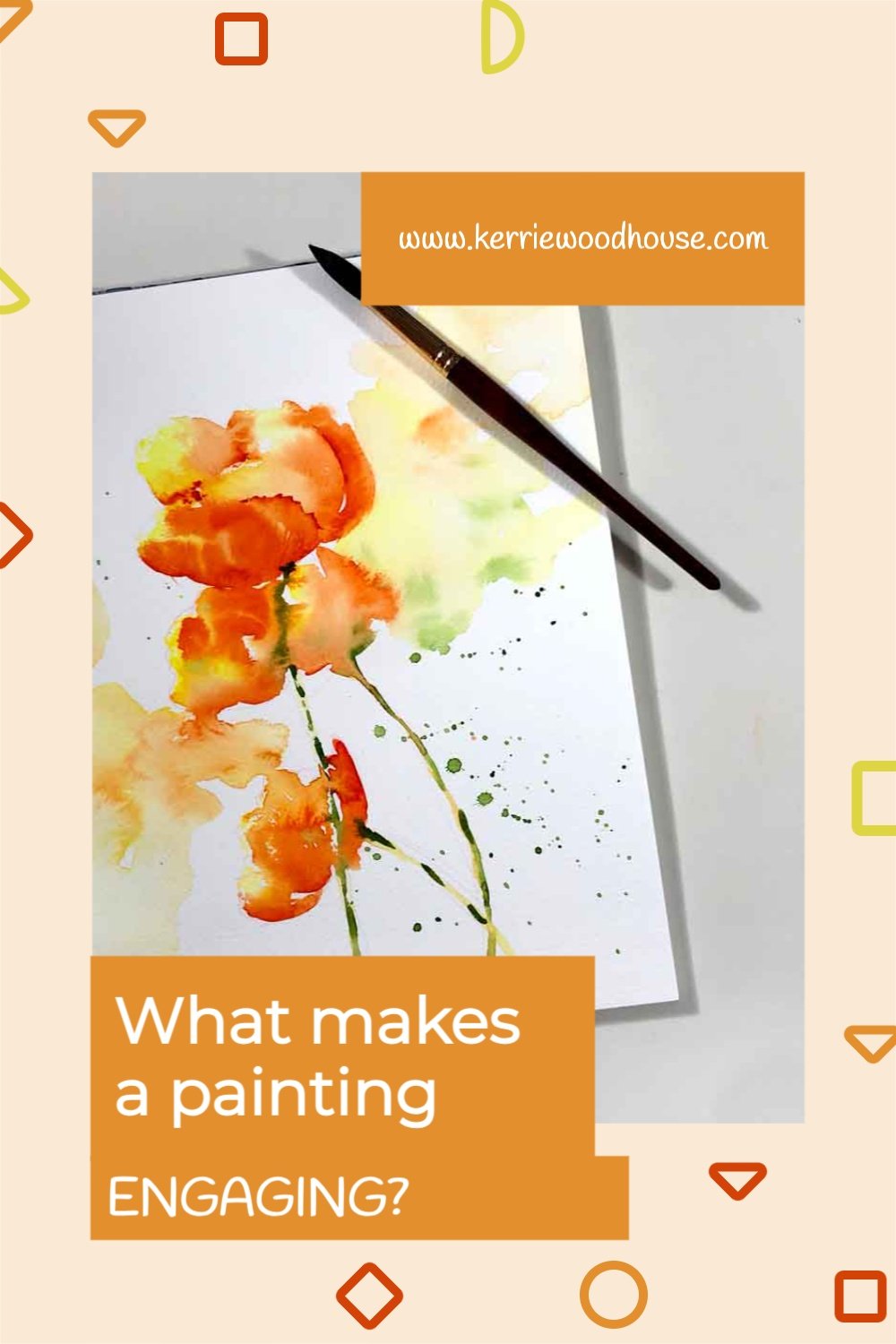3 Tips to Make Your Watercolour Paintings More Engaging
Ever come across an image that draws you in? The sort of image you find yourself a little lost in? That’s what we want to paint!
So what is it that makes a painting engaging?
I have a theory… and 3 tips to help you apply it so that you too can create intriguing paintings.
Engaging paintings are the ones that entertain the viewer’s brain.
Now there are two things that human brains love:
Puzzles
Ourselves!
We can use both of these ideas in our painting style and choice of subject matter.
Let’s talk about subject matter first, with tip #1…
Tip 1: Humanise your painting
We humans are funny creatures… fascinated by ourselves and each other.
It makes perfect sense really. We need a degree of self involvement to keep ourselves safe and we have an interest in understanding ourselves and each other in order to fit in with the rest of the clan. It's just biology, isn’t it?
So if you can humanise your painting in some way, you can make it instantly more relatable.
Oh don’t worry, I’m not saying you need to be able to paint people (but I will circle back to this in a bit).
It is still possible to add a human element to the painting without adding a figure. The most obvious example of this is a still life painting of household objects. There are lots of reasons to paint these sort of still life scenes but one of them is that these inanimate objects tell the story of the humans that use them. And our brains love stories!
(Because stories are about people.)
When we see a painting of a laden breakfast table, we are instantly imagining the people that might have chosen those croissants, picturing the whole experience and wondering how they taste. It’s this sort of brain activity that makes the image interesting to look at.
A painting like the one above has us imagining biting into the smooth skin of that nectarine. We start picturing sitting in the sunlight kitchen of some happy soul who chooses brightly coloured bowls and jugs in simple modern shapes.
You can still use this idea even when you are not painting still life objects. Like a landscape, for example.
We can effectively add a figure without having to paint one by adding some sort of man made element that appeals to a human in some way, like a bench.
Or a hat…
or both..
Like this.
We painted a whole series using this idea in the Happy Painters Hub recently. It was called 🪑Thinking Benches 🪑, because that’s what these places look like to me.
The perfect spot to sit and do a bit of thinking.
We had a delightful month painting these tranquil scenes that placed us vicariously in peaceful spots.
Want to join us?
New members get instant access to ALL the previous months (like those Thinking Benches.. and the Bright, Bold Still Lifes!)🙌
Click here to investigate and join in while you still can.
Enrolment in the membership closes soon.
Tip 2: Be Brave and Make your Painting Instantly Relatable
Ok, you knew it was coming.
You can make your painting instantly relatable by adding a figure. 😱
Yes, that does require a little more boldness from the painter. Painting figures can be tricky of course, but you get to choose how you approach it.
(Keen to give it a go? I have three tips on how to make adding a figure to your watercolour painting less daunting in this blog post here.)
From the minute we are born we are programmed to look for faces and are naturally social creatures. Including a figure in the painting is always going to draw in the viewer.
Placing a person in a painted landscape makes the scene much more relatable. Now we see not only the beautiful landscape, but we can imagine ourselves in it. And of course, our brains will be automatically searching our memory banks and remembering the people in our lives who bear some sort of similarity to the figure in the painting.
This is exactly the sort of thing that makes a painting such a pleasant diversion for our brains (and hearts).
Tip 3: Stir the Imagination with your Painting Style
Alright. Time for a tip that is much easier to get behind than tackling painting a figure.
This one is about another strategy to entertain our busy brains. It's to do with the idea that our brains love puzzles.
They automatically start making sense of whatever the eyes see, filling in any missing information and cross referencing it with memories and emotions. That’s the brain’s job and it likes to be working.
So, offer those beautiful brains something to do when they look at a painting by choosing an engaging painting style.
I’m talking about loose painting. (My Favourite Way to Paint!💜)
If an image is perfectly articulated with every hyper realistic detail, the brain has less of a fun puzzle to complete.
But think of those impressionist paintings. Slightly more abstract shapes and lively gestures leave more to the imagination. That’s why a painting can evoke different reactions in different people. We take the slightly abstract and start to make sense of it from our own unique viewpoints. This happens unconsciously, without us being aware of it.
And of course, a loose style is so much fun for the painter. It allows for the paint and painter to collaborate in creating the painting and then allows the viewer and painting to collaborate in finding meaning.
Wondering if I have written more about loose painting?
Of course I have!
Here’s a link to another blog about loose painting for those who are curious about exactly what that actually means.
But of course the easy way to experience the joy of loose painting is get out those paints and splash on that colour with us in the Happy Painters Hub.
Click here to find out more about that while enrolment is still open.
Are you on your own painting journey?
One of these might be useful…













